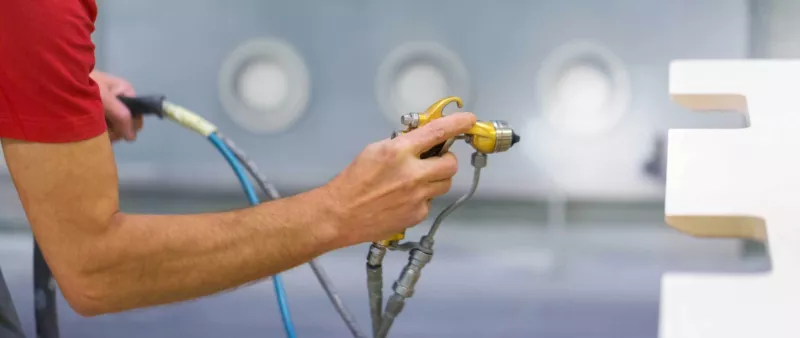The Revised Industrial Emission Directive
The Industrial Emission Directive (IED) has been updated. Gigafactories, large farms, stricter VOC limits. Read this article to find out more on whether and how these changes may affect your business.
What Is The Industrial Emission Directive?
The Industrial Emission Directive (IED) 2010/75/EU has been in force since 2010. The purpose of this regulation is to reduce and control harmful emissions coming from industrial activities, thus protecting air, water bodies, and soil. In 2024/1785/EC, the IED has been updated and includes more industries, sets stricter emission limits (concept of EPLV: Environmental Performance Limit Values) and revises the public pollutant reporting into a new (formerly) E-PRTR portal that will be reflected in future industrial operating permits.
Therefore, based on the IED revision, your local authorities may update your operating permit.


How Does The Industrial Emissions Directive Work?
Among other details, an industrial permit states the limits your activity’s wastewater and air emissions must comply with, based on the IED. These values are:
- Set for over 90 pollutants;
- Determined in the Sevilla process between the EU Commission and experts from Member States, industry, and NGOs in the form of a Best Available Technology Reference document (BREF);
- Based on the Conclusions of the BREF document as Best Available Technology Conclusions (BATC) for abating a certain contaminant; the BATC is an EU implementing act.
The Revised IED’s Timeline
Pushed by people’s thirst for a cleaner environment, the EU has been setting more ambitious sustainability goals over the last decade. Last November, the European Parliament and the Council reached an agreement on the IED revision. The IED 2.0 then entered into force on 4th August 2024. EU Member States will only have 22 months to transpose it into national law. This is a very tight timeline compared with the four years member states have for transposition and enforcement of new BATC.
Changes Introduced by the IED 2.0
The IED 2.0 aims to dramatically reduce the emissions of VOC and other pollutants by up to 40% by 2050. It also focuses on preventing waste generation from large industrial installations and intensive livestock farms. This translates into more stringent requirements to be met for grant of an environmental permit.
To reach a significant emission abatement, the revised IED will integrate the following large polluters to the list of industrial activities covered by its scope (all facilities within the EU will be equally treated regardless of the country of operation):
- Large intensive livestock farms:
>350 livestock unit (LSU) for pigs
>280 LSU for poultry (300 for laying hens)
>380 LSU for mixed farms
- Gigafactories (manufacturing of batteries). If you’re planning to build a battery plant exceeding ~4 GWh, it is advised to consult your environmental local authority as early as possible in your project timeline to minimise surprises regarding permitted emission levels.
- Mines
Finally, the new regulations introduce penalties of at least 3% of non-complying companies’ annual turnover.
For further details, you can read all amendments to IED here.
Getting Ready To Comply With IED 2.0
The national implementation of the revised IED will be coming soon and the best way to prepare is to invest in one of the BAT for treating your emissions. For instance, activated carbon is recommended by the EU as BAT for several industrial activities including chemicals manufacturing, surface treatment with solvents, waste treatment, food processing, slaughterhouses, textile manufacturing, etc.
DESOTEC has developed sustainable mobile filtration solutions based on activated carbon to purify industrial air and water streams and help industries meet even stricter regulations. For example, for applications like battery production & recycling (high flow rate, low VOC concentrations), this route is more energy-efficient than other abatement techniques (e.g. gas-consuming technologies).
Moreover, by reactivating the spent activated carbon, DESOTEC can significantly reduce the CO2-eq emissions of the emission abatement.
How DESOTEC can help
Our sustainable mobile filtration solutions based on activated carbon purify industrial air and water streams and help industries meet stricter regulations like the IED 2.0. If you reach out to us today, we’ll schedule a call to discuss the purification solution that best fits your needs.
Contact our expertsHow DESOTEC can help
Our sustainable mobile filtration solutions based on activated carbon purify industrial air and water streams and help industries meet stricter regulations like the IED 2.0. If you reach out to us today, we’ll schedule a call to discuss the purification solution that best fits your needs.
Contact our experts-
VOCs and Solvents
It’s vital to reduce VOCs and solvents in air emissions to protect occupational health, maintain air quality, and avoid contributing to climate change. -
Chemical industry
Circular solutions to purify chemicals, air emissions and wastewater, protecting occupational health, the environment, and your business. -
Our filtration solutions
We offer a wide range of filter models and carbon grades to suit your industrial water or air purification requirements.


